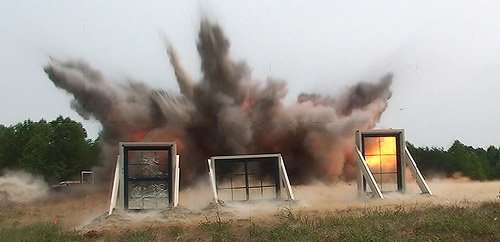Why Use Blast Windows and Entry Systems?
Since the 1995 bombing of the Oklahoma Federal Building, the incorporation of blast-resistant windows for high-profile buildings has become a standard practice. Whether for retrofit or new design, blast-resistant windows and doors are a design “fact of life” today. As hard-won experience and research teaches us more about the wide-ranging effects of explosions on buildings, it’s clear that blast and ballistic resistant windows and doors will benefit a broad range of structure types (and especially their occupants) in addition to high-profile buildings.
In response to the 9/11 terrorist attacks, Graham Architectural Products began making blast-resistant products and supplying them to government and private customers. Our engineering department has extensive knowledge of government specifications and application processes that ensure proper design for the intended purpose. We are committed to an active testing program for all these products in compliance with all applicable standards.
There is no such thing as blast proof.

